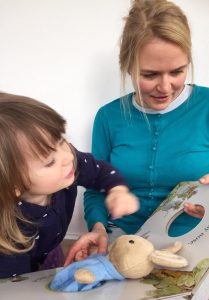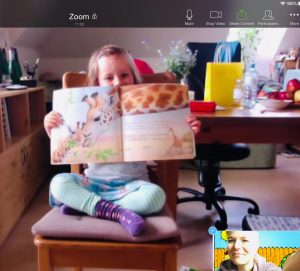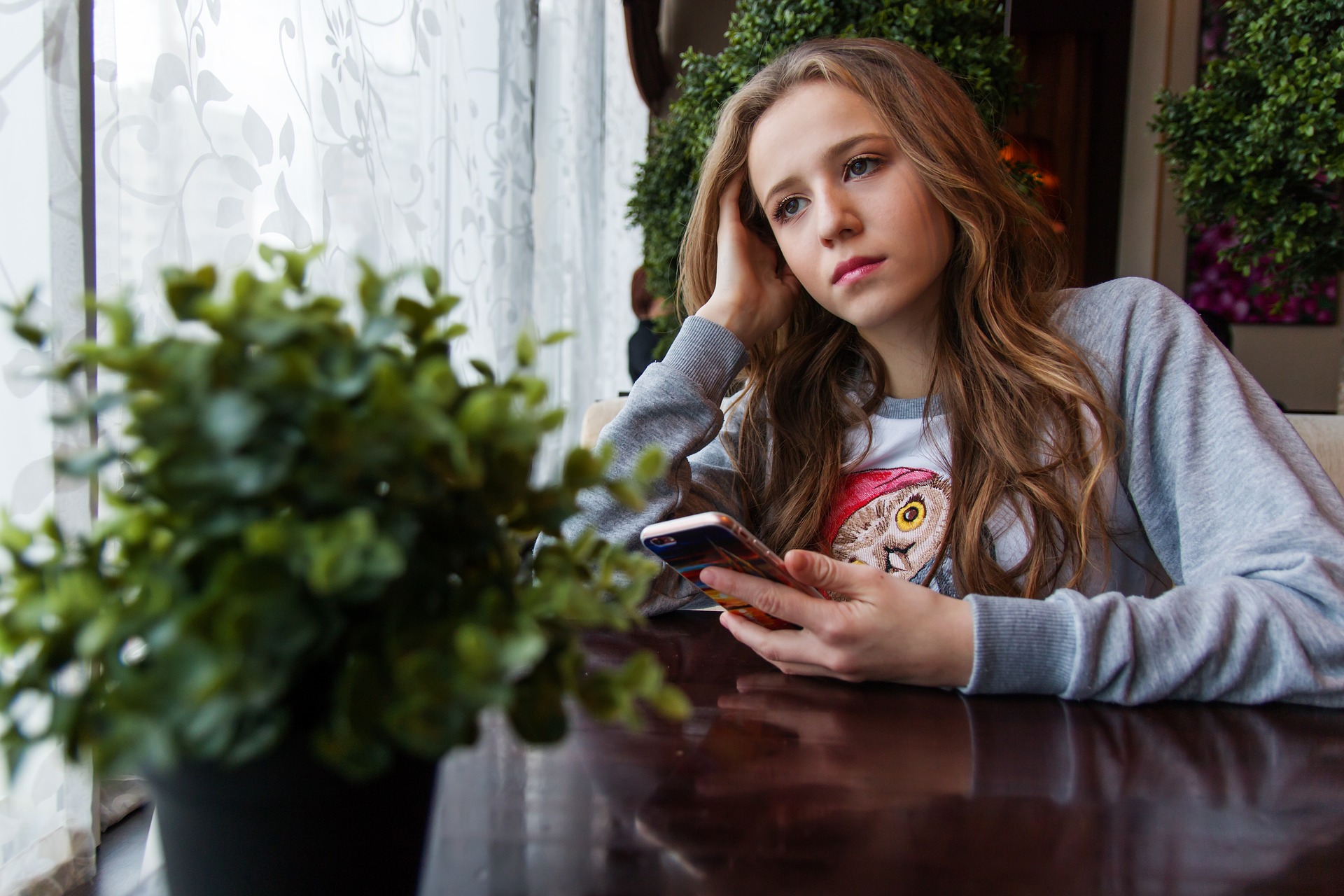 When adults read a book with a child, they support the child’s language, emotional development, understanding of social relationships, fantasy, aesthetic qualities of images and role of texts in lives. During the Covid-19 pandemic, some families struggled to keep up regular reading routines, while others enjoyed longer time together around books. Natalia Kucirkova and Trude Hoel talk about the practice of introducing book reading as a new activity via the screen.
When adults read a book with a child, they support the child’s language, emotional development, understanding of social relationships, fantasy, aesthetic qualities of images and role of texts in lives. During the Covid-19 pandemic, some families struggled to keep up regular reading routines, while others enjoyed longer time together around books. Natalia Kucirkova and Trude Hoel talk about the practice of introducing book reading as a new activity via the screen.
Video-call shared reading (VCSR for short) is a practice familiar to families who had to be separated for reasons such as health (for example parents with a terminal illness), work (parents on business travels), prison sentence, war or a pandemic. The Covid-19 lockdown has introduced VCSR not only to families forced apart but also to volunteers who video-chat with children about books. VCSR can be carried out with print or digital books and with children of any age. It is in no way a replacement for the physical bonding that occurs when children sit together with adults to read, but it still carries many other benefits associated with book reading. Based on our experience of observing, participating or supporting VCSR we have put together some tips for adults who would like to try it out.
Before the reading session
- Choice of books
During a lockdown, the book choice becomes limited, especially for families who tend to rely on books from libraries. If you are reading with a child who has a mini-library at home, then let them choose the book they wish to read. You can start with the child’s favourite book and return to this book on repeated occasions. Repeated reading has beneficial effects on vocabulary and story comprehension. If children don’t have (m)any books at home or if you wish to expand their collection you can introduce new books. The BookTrust’s Great Books Guide provides book recommendation by interest and age (for 0-11-years olds). You could buy a new book or you can also share electronic books, which can be downloaded for free and in various languages, covering a range of topics, including stories about the coronavirus.
It goes without saying that before you start reading, you need to tilt the screen in a way the child can see the book you read to him or her. Make sure your audio settings are working and your emails or incoming calls are switched off. With electronic books, you need to have the e-book downloaded on your device and share your screen as you read it to the child. Alternatively, in families with multiple devices, you can email the electronic book to the children’s parents in advance, who can download it, so that children can have their own copy and follow on their own device as you read it through the video camera.
- Anticipation
Preparing the child for the reading activity builds up their anticipation and contributes to the reading experience. You can email/message the child (or the child’s parents) that you look forward to the reading activity (for example ‘I have an exciting book about a thief’). Before the reading starts, you can prompt the child’s memory about previous book reading or experiences that connect to the book content. Make sure you talk about the book cover before you start reading the story. You can ask questions such as: What do you see in the picture? Does this remind you of anything? What can the title mean? What do you think the book is about?
During the reading session
- Multimodal cues
With the current video chatting apps, such as Skype or FaceTime, you can engage through video and image; sounds that can be your voiceover but also your own music or recordings, and the textual mode, which works well for older children who might want to see some words written down in the chat box. You can take screenshots or photos and use them to point to specific elements of the story. You can move the book closer or further apart from the camera to zoom in on individual scenes. You can change your background for different stories, for example, a picture of a rainbow as you read ‘The Rainbow Fish’. Although the touch repertoire of digital books is different from print ones, you can still ask the child to ask you to turn the page and pay close attention to how they respond to the book.
- Dramatization
Children love role-play and taking on different persona during book reading. If you change your voice for individual story characters (for example the little frog with a tiny voice and the elephant with a BIG voice), you are likely to make your reading partner pay more attention. You can also act out individual story parts and encourage the child to pretend to be one of the story characters. Such story extensions work especially well when they are supported with props: you can use some natural materials (pebbles, small twigs, shells) or the child’s toys to act out the story. You can also dress up with the clothes you and the child have at home to enrich your fantasy play.
- Extended conversations
 Shared reading adds value to children’s word learning if adults extend the book conversation outside the text in the book. You can ask the child questions about what happened in the story and why or you can talk to children about their own experiences that are connected to the book (for example ‘Tell me about the prettiest rainbow you’ve ever seen’). The more abstract your questions (for example ‘Why don’t we see rainbows at night?’) and the more elaborated your comments are, the more likely you are to support the child’s language and reading skills. Humour and reversing reality are great too, especially for prompting children’s development of understanding others’ perspectives and thus lying down the foundations for empathy.
Shared reading adds value to children’s word learning if adults extend the book conversation outside the text in the book. You can ask the child questions about what happened in the story and why or you can talk to children about their own experiences that are connected to the book (for example ‘Tell me about the prettiest rainbow you’ve ever seen’). The more abstract your questions (for example ‘Why don’t we see rainbows at night?’) and the more elaborated your comments are, the more likely you are to support the child’s language and reading skills. Humour and reversing reality are great too, especially for prompting children’s development of understanding others’ perspectives and thus lying down the foundations for empathy.
- Personalisation
Whether you have books or not, making your own book is always an attractive option to bring you closer and deepen your relationship. You can create a personalised book digitally (there are some free apps like the Our Story app with which you can use your own photos, voiceovers and texts) or with the paper and pencil resources available to you and the child at home. The book-making project can be extended over longer time and feature the child’s family members, friends, objects and experiences they are currently curious about and interested in. Depending on the child’s age and motivation, you can choose who leads the story-making. Reading personalised books is especially motivational for the youngest children and has been found to bring families together with shared laughter and repeated readings, both with digital and paper-based personalised books.
Our tips should not be perceived as guidance or recommendation but rather as a work-in-progress community resource that we hope others will want to expand and refine as they engage in VCSR themselves. If you would like to send us your tips or comments, please email filiorum@uis.no
Image credits: in text images by Natalia Kucirkova. Featured image: Patricia Prudente on Unsplash
This post gives the views of the authors and does not represent the position of the LSE Parenting for a Digital Future blog, nor of the London School of Economics and Political Science.






